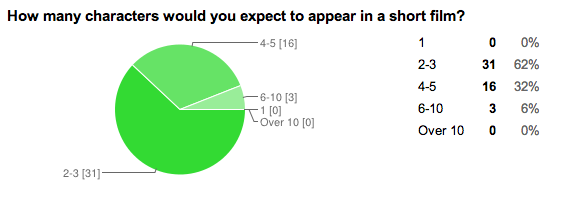So, scene one, the opening...
Mr Michie's "Things To Work On":
- (00:00-00:03) A personal note-to-self, I didn't think the font worked, and I preferred the more simplistic approach of the title's font at the end of the scene. Consequently, I'd like to change this font to the one seen at the end of the scene.
- (00:27-00:29) The reaction shot of Emily's face was too quick an edit, jolting the viewer out of the action. Therefore, I need to slow down the cut, to be more reflective of the pace of the scene as a whole. Action plan: look back at the rough shots and try to incorporate shots that makes the surprise more slow, to let Emily's shock sink in.
I'm proud of the opening scene. The scene's 'objectives', to create a sense of ambiguity, foreboding and ominousness are all, in my opinion, achieved. Artistically, I really like the shot at (00:16) the out-of-focus look is reflective of the persona's hazed state-of-mind. Furthermore, the over-the-shoulder shot (see 00:14) works well, and the framing of the shot at (00:18), with Emily and Will in the foreground and a menacing figure situated in the middle symbolically enforces the idea that Liam's character is menacing and commanding. In terms of things that could have been improved upon, yes, the edit was at one point a bit too quick. Coupled with the font issue, these are the things that need to be improved upon to fine-tune the scene. Otherwise, I'm pleased.
Now, scene two...
Mr Michie's "Things To Work On":
- The shots at (00:13) and (1:04-1:06) aren't relevant to the scene and should be removed.
- The shot at (00:02-00:11) doesn't establish Emily's character well enough. therefore, I should try to make it apparent the relevance of Emily's character in a scene preceding this one.
- The slight lull in pace at (00:28-00:30) detracts from the action and sense that Emily's character is constantly nagging directed at Liam's character and so should be edited out.
- The shot at (00:40-00:45) doesn't make it apparent enough that Liam's character is tuning out of the distant moaning from Emily's character. Consequently, I need to find a suitable way to convey his without jeopardising the quality of lighting.
- The shot beginning at (00:35)is out of focus and, whilst at the time I did this intentionally, could be called up as a mistake.
- At (00:57) Liam's head is out of frame. Mr Michie recommended that to rectify this framing error I could either- a) do a jump cut to show a close-up of Liam sanding up or b) a tilt shot. I've decided that, when re-shooting this, I will use the latter option as jump-cuts are already prominent in this scene and doing a successful tilt shot will show a more advanced skill at filming.
Much of this scene was largely improvised so, in that respect, I'm pleased with the way in which I directed the actors to come up with a set of lines that added to the film's realism and authenticity. Trying to cajole improvised lines out of actors is understandably challenging, but much more preferable to rigidly sticking to my script, which would encourage a level of woodenness to the acting I'm trying to avoid. I'd like to reshoot this scene. The lighting evidently isn't great, and the black clothes on the characters appear grainy when you watch the scene back. I liked the idea of the jump-cuts; it wasn't planned, but I liked the idea of capturing snapshots of the meeting, to show, in terms of editing, the prevalence of Emily's character, wearing the proverbial trousers in the relationship. It added a touch of comic relief to what is a very dark film, and it also helps to ambiguously hint at Liam's character's motive in the climactic scene. Now that we know the lines and the shots needed to capture the scene, I reckon I could be efficient in re-shooting this scene with better lighting, whilst also checking off the things I need to improve on. Consequently, I feel okay with re-doing this scene.
In summary, I'm pleased with the progress I've made in shooting and editing these scenes. I know what I need to work on and accomplish. In the next few days, I'd like to do a comparison blog of the two scenes and how the updated versions of the scenes have dealt with things that I needed to work on. Lots to do then...











